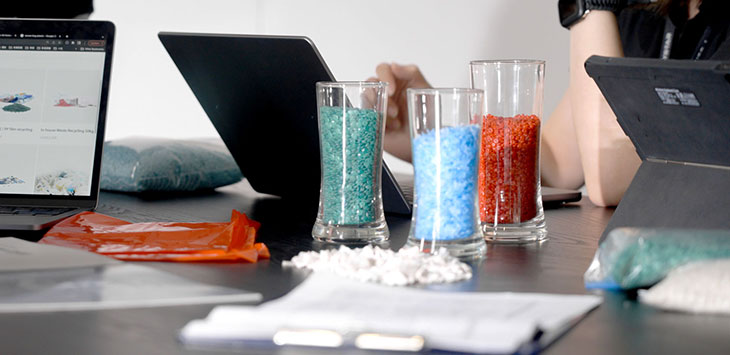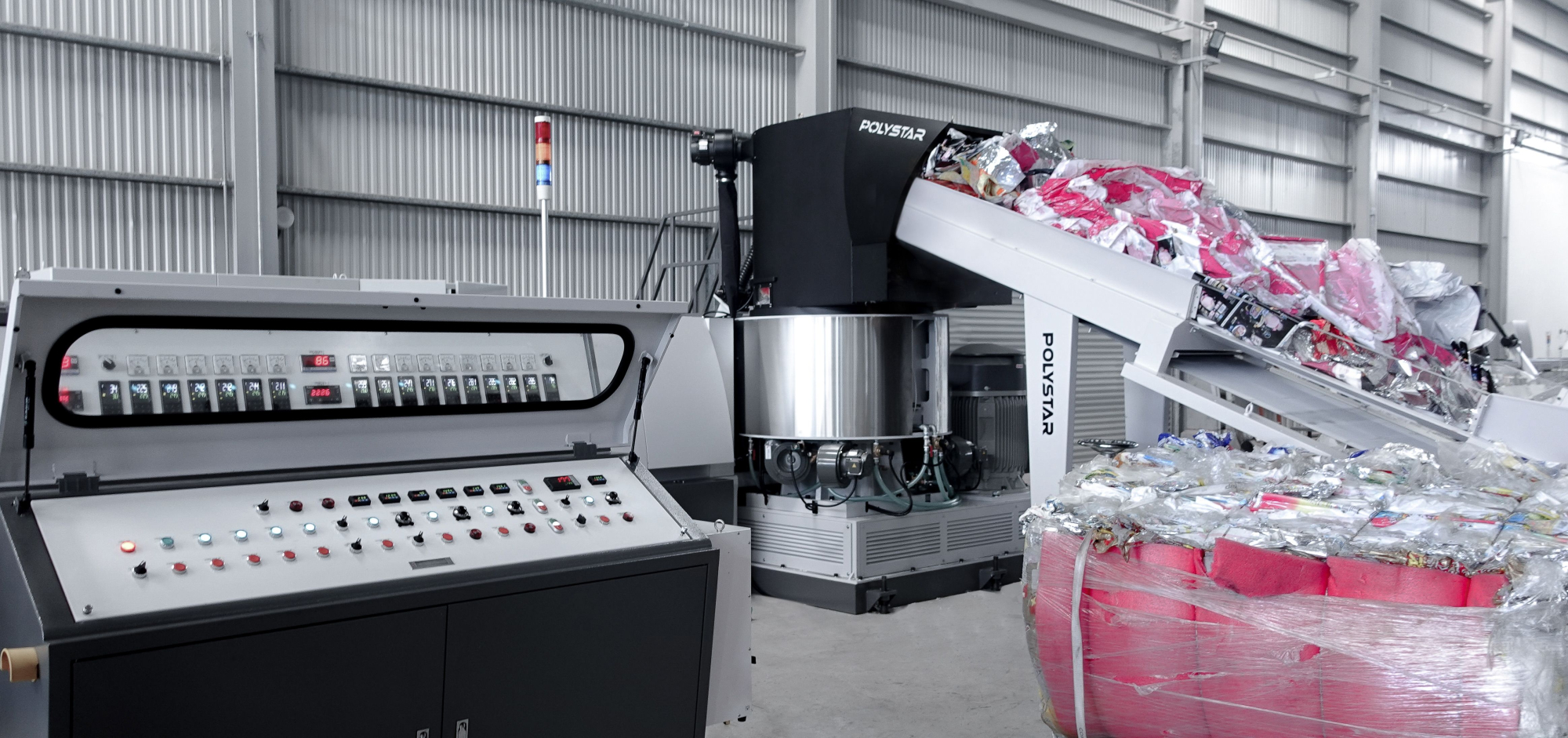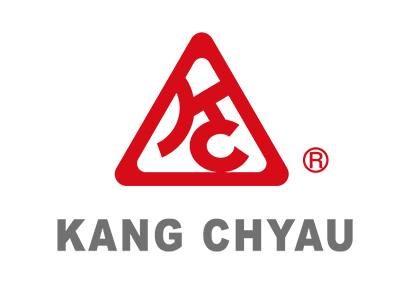What is Post-Consumer Plastic Recycling? - Advantages and Solutions
Plastic is one of the most widely used materials worldwide, found in everything from food packaging to car parts. As a result, the amount of plastic waste produced is enormous, creating an environmental problem.
This is where mechanical recycling has become a popular solution among plastic producers and recyclers.
What is the process of post-consumer plastic recycling?

Post-consumer plastic recycling involves several steps in its process, including:
1. Sorting
Sorting is the first step in plastic recycling. This is when plastics are separated by type, that is, by each resin that exists (HDPE, LDPE, LLDPE, PP, among others), by color, and by the form in which they were produced (plastic bags, hard plastics, foam, among others).
2. Shredding
After being sorted, plastics will be shredded, each category separately, until they are broken down into small pieces to be put into the next process.
3. Washing
After being shredded, plastic waste goes through a washing process to remove impurities and contaminants.
4. Drying
Since the plastics will have been washed and will be wet, they will need to be dried to maintain a controlled moisture level of 3-5% for the next step.
5. Pelletizing
The final step of mechanical recycling is pelletizing. In this step, the sorted, shredded, washed, and dried plastic waste is converted into pellets. This process is done using recycling machinery that includes an extruder, which melts the plastics that will then pass through a head (which has holes in it), and then be cut into pellets by the blades to obtain the final product, in this case, recycled pellets.
What are the advantages of post-consumer plastic recycling?

Post-consumer plastic recycling not only brings advantages to the environment but also to humanity. Among the advantages of mechanical recycling, we have:
1. Reduction of waste
It reduces the amount of waste that is sent to landfills and that typically takes centuries to decompose (due to the characteristics of different plastics). By recycling plastics, materials will be given another life, and we will avoid them ending up polluting the environment.
2. Reduction of natural resource use
With mechanical recycling, pellets that can be put back into production lines will be obtained, thus reducing the use of virgin raw materials. This reduces the environmental impact produced when new materials are extracted.
3. Job creation
Mechanical recycling involves different stages, in which a large number of jobs are generated; two stages generate more jobs, one is the collection of plastics and the other is their sorting. Along with mechanical recycling, a positive impact on the economies of countries is obtained.
4. Energy savings
In the production (extraction) of virgin materials, large amounts of energy are required, meaning that by recycling mechanically, companies will reduce their costs for pellets as well as electricity consumption.
5. Sustainable development
Mechanical recycling leads us to a circular economy, helping to conserve natural resources and care for the environment. This will provide a better and more efficient life for plastics, both waste and virgin materials.
Ideal solutions for post-consumer plastic recycling
-
Post-consumer plastic bags and film waste are made of HDPE, LDPE, LLDPE, and PP.
POLYSTAR's Repro-Flex Plus with three degassing and two filtration stages is the ideal solution for washed and dried waste plastic bags and films made of HDPE, LDPE, LLDPE, and PP. This model cuts and compacts, extrudes, and pelletizes plastic waste, resulting in high-quality recycled pellets for use in the plastic industry.

-
Post-consumer Hard plastic waste made of PE, PP, PS, and ABS.
POLYSTAR's Repro-Direct feeding hopper is specially designed for recyclers and producers with mostly hard plastic waste made of PE, PP, PS, and ABS. This recycling machinery directly feeds the extruder with the hard plastic waste (crushed, washed, and dried) through a screw conveyor or feeding belt. The recycled pellets produced by this machine can be used back in the production line of plastic injection and blow molding.

Learn more
- Why to Use Recycled Plastic Pellets for Injection Molding instead of Regrinds? - Blog
- Why Should All Plastic Film Producers Recycle? - Blog
بثق وخطوط البثق
- الهواء فقاعة الفيلم النتوء الخط
- الهواء فقاعة الفيلم النتوء الخط
- الهواء فقاعة ورقة المشارك النتوء الخط
- حقيبة صنع الآلات
- ضربة فيلم ماكينة
- ضربة فيلم إكسوسيون
- مهب فيلم ماكينة
- يلقي فيلم آلة
- آلة طلاء
- إبس / إيب رغوة ورقة خط البثق
- الطارد
- آلات الترقق
- Extrusion Lines For Filaments and Yarn
- Extrusion Lines For Pipes and Profiles
- آلات حيدة البثق
- خط حيدة النتوء
- PET Strapping Band Extrusion Lines
- البلاستيك حقيبة صنع الآلات
- البلاستيك فيلم المشارك النتوء
- ماكينات تصنيع الأنابيب البلاستيكية
- البلاستيك أنبوب ماكينة
- بك خرطوم ماكينة
- سترو، صنع الآلات
- التوأم برغي الطارد
- التوأم برغي بثق
- المنسوجة حقيبة ماكينة
معدات إعادة التدوير للتجهيز المسبق
- زجاجة غسل الخط
- محطم
- المحبب
- بيليه
- إنتاج الكسور
- Pelletizing Machines
- بيت زجاجة إعادة تدوير الخط
- بيت الساخنة غسل الخط
- آلة تكوير
- معدات إعادة تدوير البلاستيك للتجهيز المسبق
- ماكينات إعادة تدوير البلاستيك
- البلاستيك آلة إعادة تدوير النفايات
- خطوط إعادة التدوير
- آلة إعادة التدوير
- التقطيع
- العصارات
- خط الغسيل
- معدات إعادة تدوير النفايات












